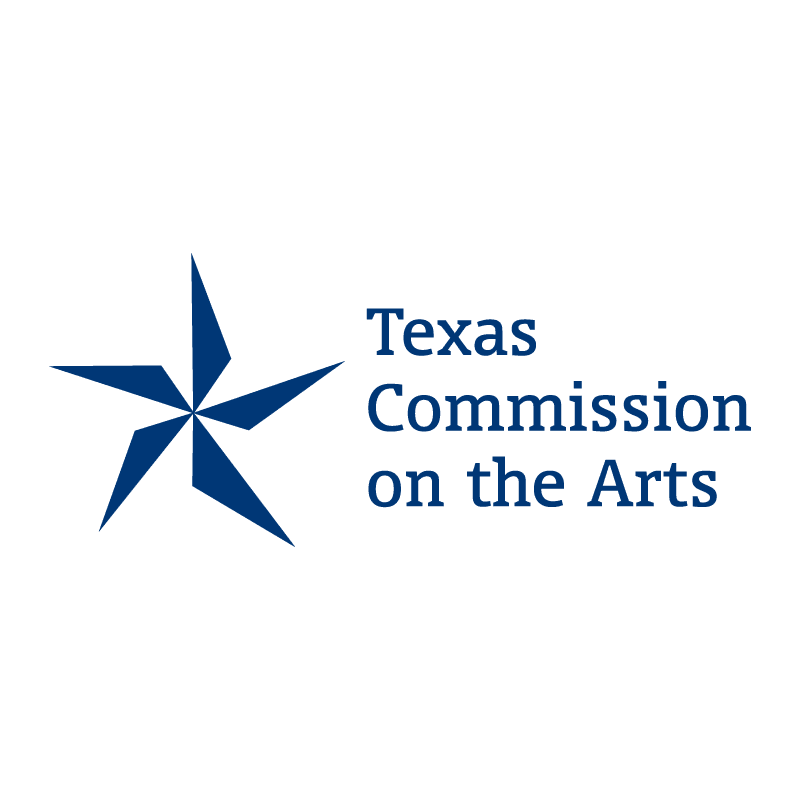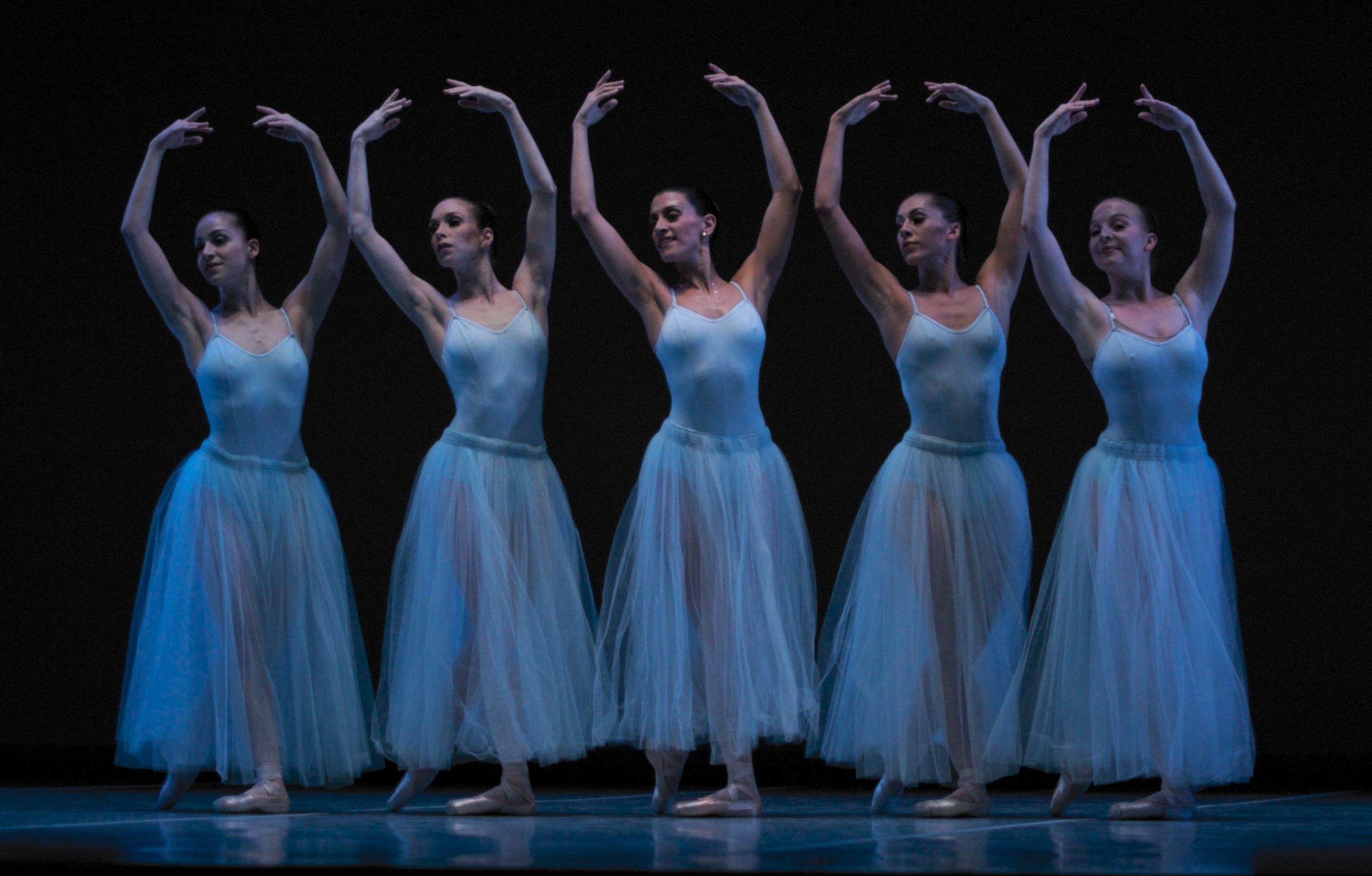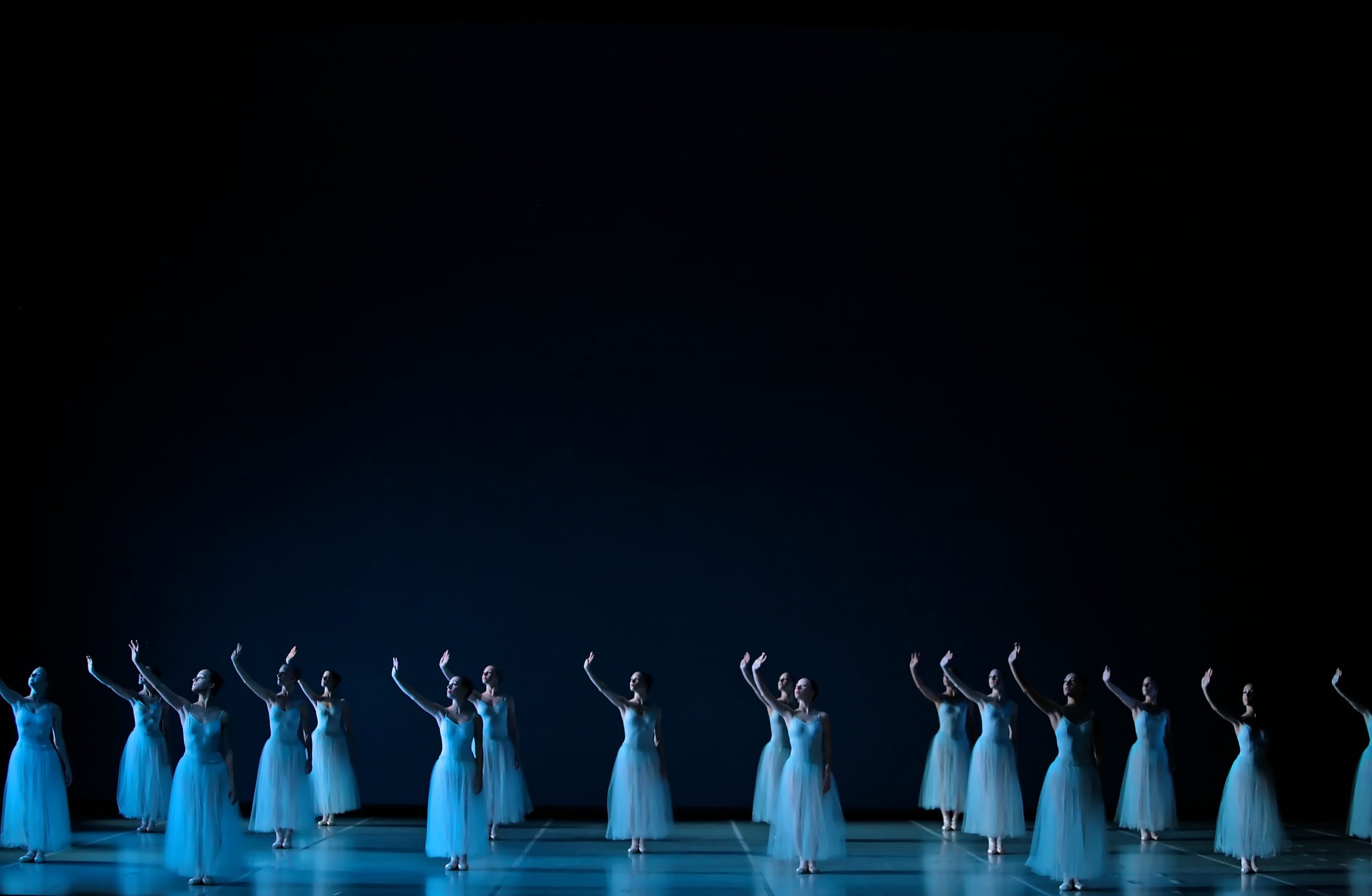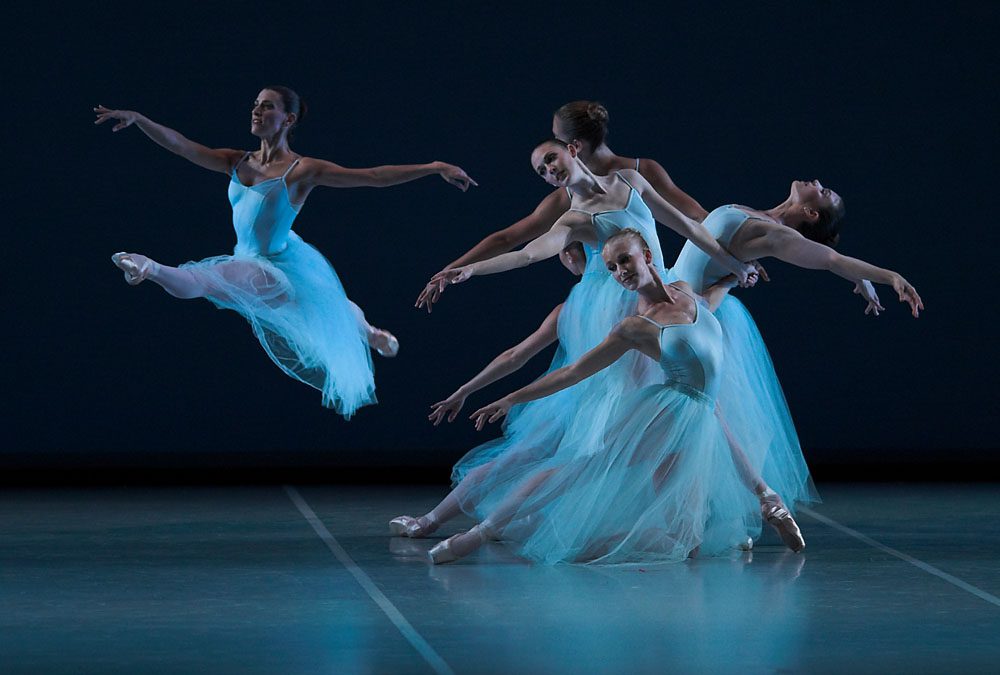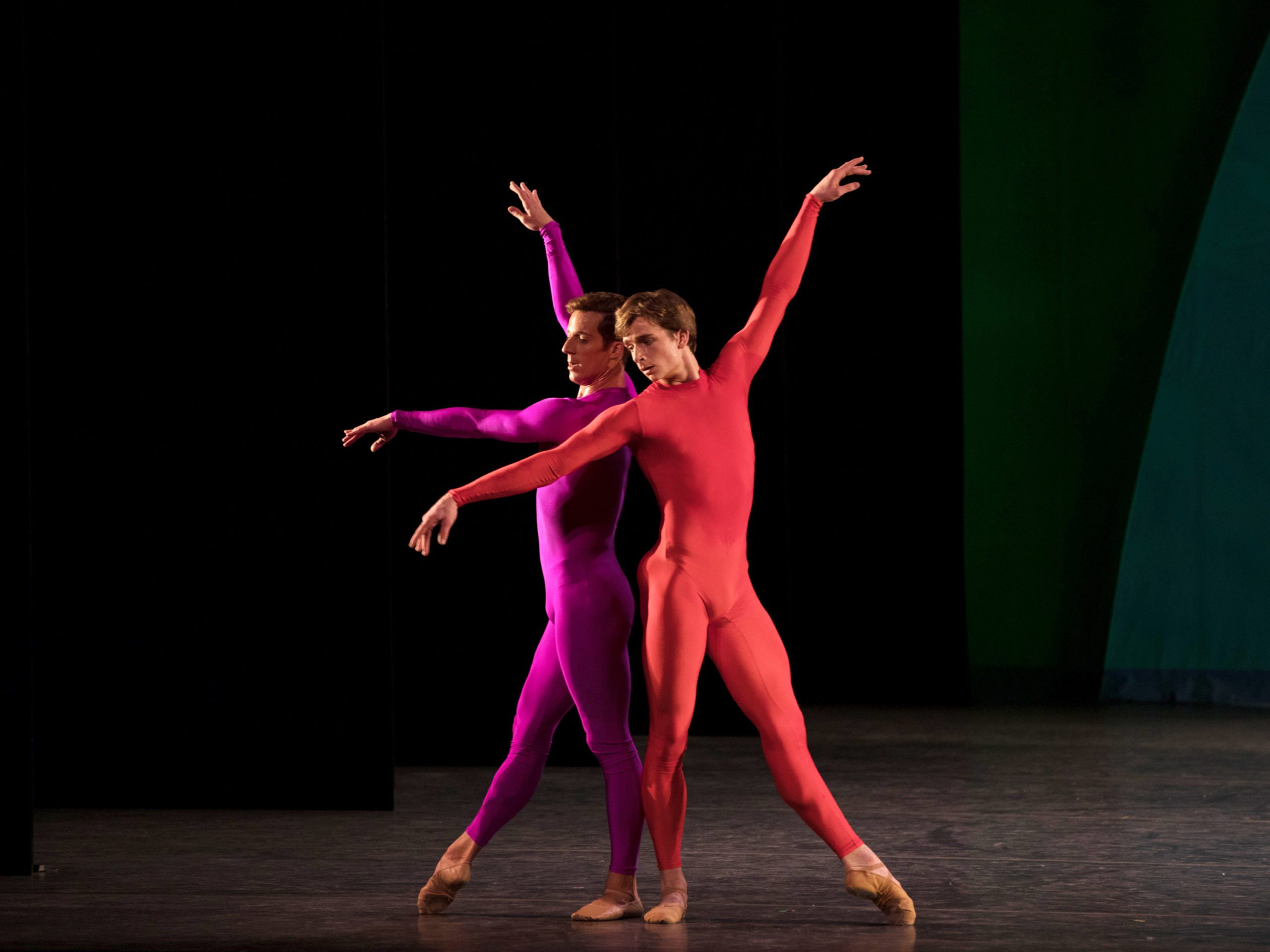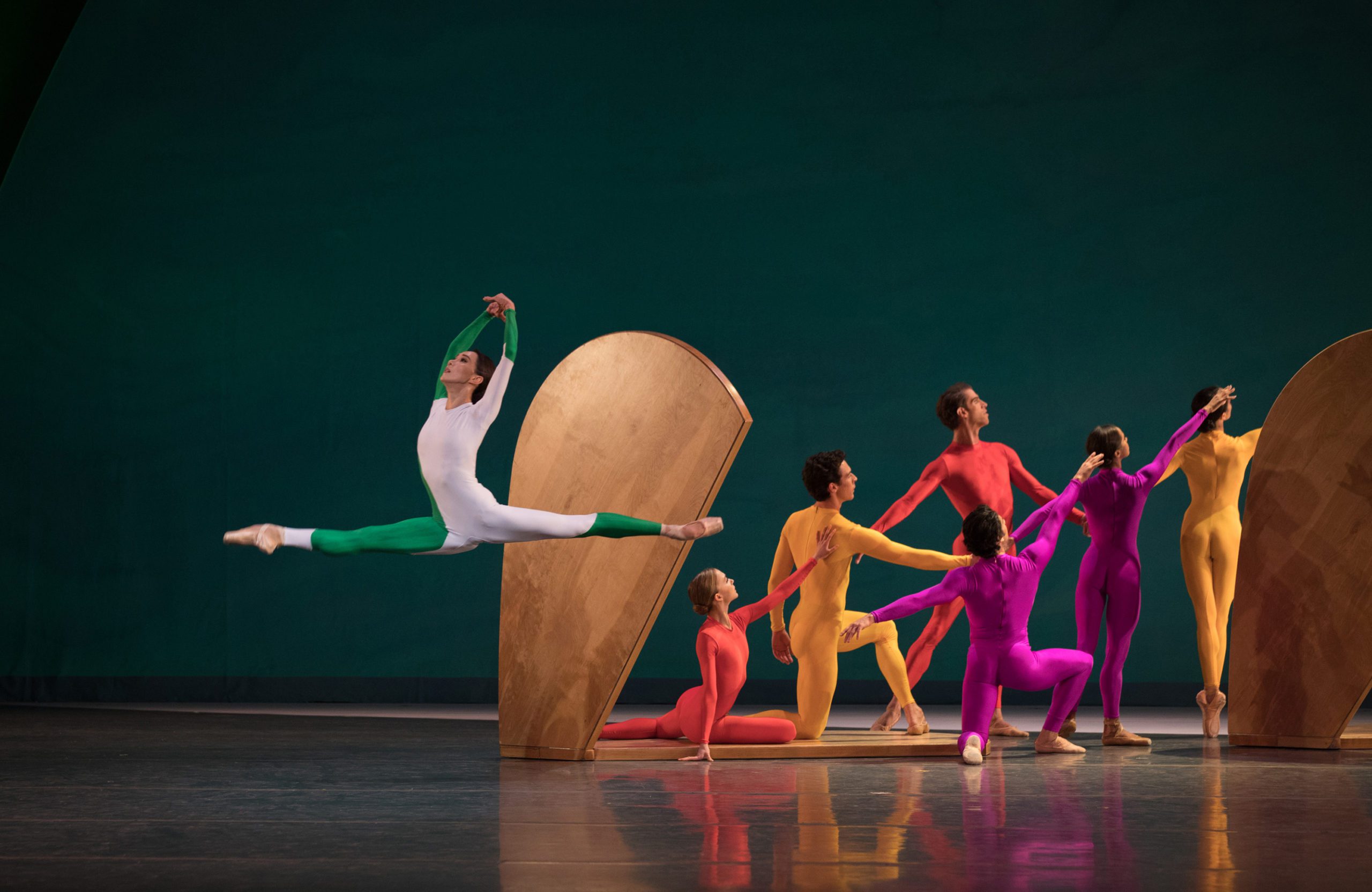Sarah’s Songs
FEB. 10, FEB. 11, FEB. 12
VALENTINE’S WEEKEND BRINGS TOGETHER A LUXURIOUS TRIO OF WORKS
From the beauty of Balanchine’s iconic neoclassical Serenade, bathed in soft blue… to the dynamic energy and vivid colors of Jessica Lang’s contemporary Garden Blue, exploring movement, form, and color and featuring the on-stage work of visual artist Sarah Crowner… to a world premiere of I Am The Monument by Stephen Mills dedicated to Sarah and Dr. Ernest Butler in celebration of their love of the arts. This collection of works is truly a dance lover’s treat…
CHOREOGRAPHY: George Balanchine, Jessica Lang, Stephen Mills
MUSIC: Pyotr Tchaikovsky, Antonin Dvořák, Philip Glass
LIVE ACCOMPANIMENT: Austin Symphony Orchestra, Dr. Michelle Schumann and Austin Chamber Music Center
VISUAL ART (GARDEN BLUE): Sarah Crowner
RUNTIME: 120 minutes with two 20 minute intermissions
Serenade (35 minutes)
Intermission (20 minutes)
Garden Blue (25 minutes)
Intermission (20 minutes)
World Premiere: I Am The Monument (20 minutes)
3 PERFORMANCES:
- Friday, February 10, 2023, at 8 p.m.
- Saturday, February 11, 2023, at 8 p.m.
- Sunday, February 12, 2023, at 3 p.m.
Please visit our FAQs page for information about parking, discounts, and more.
WHY WE RECOMMEND PURCHASING PERFORMANCE TICKETS *DIRECTLY* FROM BALLET AUSTIN
Ballet Austin strives to share the excitement and beauty of live professional dance with as many community members as possible. *As a 501c3 nonprofit organization, Ballet Austin raises funds throughout the year to help defray part of the production costs in order to bring live performances to you and keep the price of our tickets as low as possible. The following information is intended to assist you as a consumer and help you have the best experience possible.
When you purchase directly from Ballet Austin:
- You are assured your tickets are valid, and your seats are reserved for you/your family/your party.
- You have access to the most affordable ticket prices.* Ballet Austin tickets can range between $20 – $125 dollars (plus applicable fees), depending on location. If you are being asked to pay more per ticket, you are NOT buying from Ballet Austin.
- You have the flexibility to exchange your ticket
/s to another performance for a small handling fee, as tickets remain available.
If you choose to purchase Ballet Austin tickets from sources other than Ballet Austin, we recommend that you:
- Never pay cash or use apps such as Venmo to purchase tickets.
- Verify performance dates/times and check for sold-out performances BEFORE purchasing from a third-party seller or service by visiting the Ballet Austin website.
- Check the Long Center’s Dell Hall seating map to confirm the existence of the seats being offered to you. Long Center Seating Chart
NOTE: Issues related to tickets purchased from a third-party seller will need to be discussed with that company. Ballet Austin will have no record of these sales.
Our goal for each Ballet Austin performance is to create wonderful, lasting memories for you, your family, and your friends. If you have questions, let us help you by contacting our box office at 512.476.2163 or by email at boxoffice@balletaustin.org. We look forward to seeing you soon.
PERFORMANCE INFORMATION
Choreography by George Balanchine
Serenade premiered in 1934 and is the first original work George Balanchine created in America. Originally choreographed for students of the School of American Ballet, the piece was reworked many times during Balanchine’s lifetime and the final version to be performed by Ballet Austin features four movements set to Pyotr Tchaikovsky’s Serenade for Strings in C, Op. 48. Ballet Austin’s main company previously performed Serenade in 1996 and 2006.
Choreography by Jessica Lang, Visual Art by Sarah Crowner
Garden Blue was choreographed by New York-based choreographer Jessica Lang and is set to the first three movements of Antonín Dvořák’s “Dumky” Piano Trio No. 4 in E minor. The piece features striking visual elements from artist Sarah Crowner who created the boldly colorful costumes and large interactive sets featured in the work. Garden Blue was premiered by American Ballet Theatre on October 19, 2018 with an original cast that featured Misty Copeland and James Whiteside.
Choreography by Stephen Mills
I Am The Monument is a World Premiere contemporary ballet choreographed by Ballet Austin’s Artistic Director Stephen Mills in collaboration with Ballet Austin company dancers. The work is set to three movements of Philip Glass’ Symphony No. 3, a four movement work for string orchestra that is considered one of Glass’ most traditional works. Mr. Mills, who draws deep choreographic inspiration from music, was inspired by the dynamic and percussive elements of the composition to create a work that allowed the dancers to fully embody the accompanying music.
SERENADE CAST
Grace Morton (Feb 10,12)/ Alyssa Manguiat (Feb 11), Vivien Farrell (Feb 10,12)/ Isabella Phillips Lynch (Feb 11), Katherine Deuitch
Morgan Stillman (Feb 10,12) / Leighton Taylor (Feb 11), James Fuller
Courtney Holland, Sahel Flora Pascual, Elise Pekarek, Chelsea Marie Renner
Alyssa Manguiat (Feb 10,12) / Grace Morton (Feb 11), Dianetzy Rojas, Daniela Bennetti, Lexi Eicher, Meg Kataoka, Murray McCormack, Isabella Salas, Daisy Ye, Amelia Bednar, Carly Darnell, Ashley Krystkowiak (Feb 10,12) / Reagan Arenz (Feb 11), Nya Mitchell, Alexandra Owens
Ian J. Bethany, Andrew Buckley, Colin Canavan, Arnaldo Hernandez
GARDEN BLUE CAST
Katherine Deuitch
Courtney Holland, Arnaldo Hernandez
Dianetzy Rojas, Colin Canavan
Alyssa Manguiat (Feb 10,12) / Elise Pekarek (Feb 11), James Fuller
I AM THE MONUMENT CAST
MOVEMENT 1
Paul Martin
Ian J Bethany, Colin Canavan, James Fuller, Leighton Taylor
MOVEMENT 2
Grace Morton (Feb 10,12) / Katherine Deuitch (Feb 11)
Vivien Farrell, Courtney Holland, Isabella Phillips Lynch, Alyssa Manguiat, Sahel Flora Pascual, Elise Pekarek, Chelsea Marie Renner, Dianetzy Rojas
Andrew Buckley, Edward Carr, Arnaldo Hernandez, Morgan Stillman,
MOVEMENT 3
Paul Martin
Ian J. Bethany, Colin Canavan, James Fuller, Leighton Taylor
VIDEO GALLERY
Videos by Paul Michael Bloodgood
PHOTO GALLERY
BEHIND-THE-SCENES PHOTO GALLERY
MEET THE ARTISTS

STEPHEN MILLS
Choreography

GEORGE BALANCHINE
Choreography

JESSICA LANG
Choreography
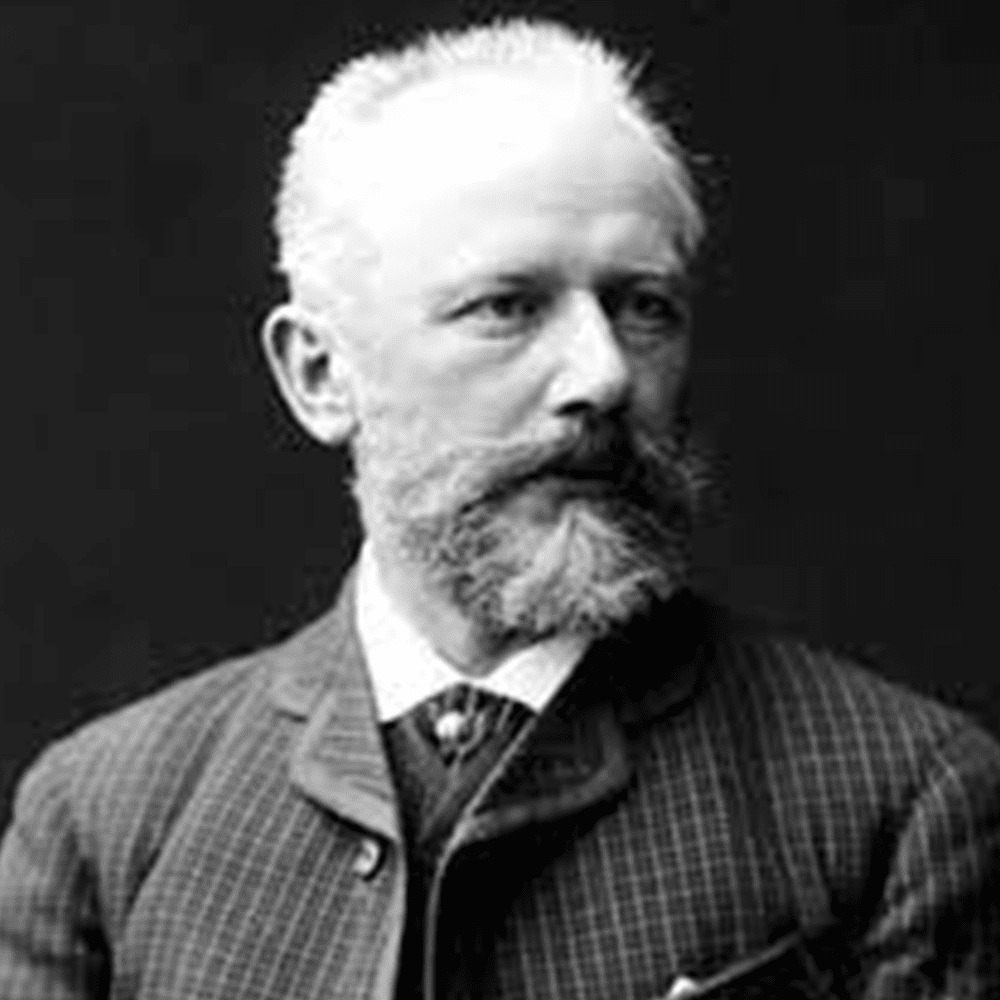
PYOTRY TCHAIKOVSKY
Music
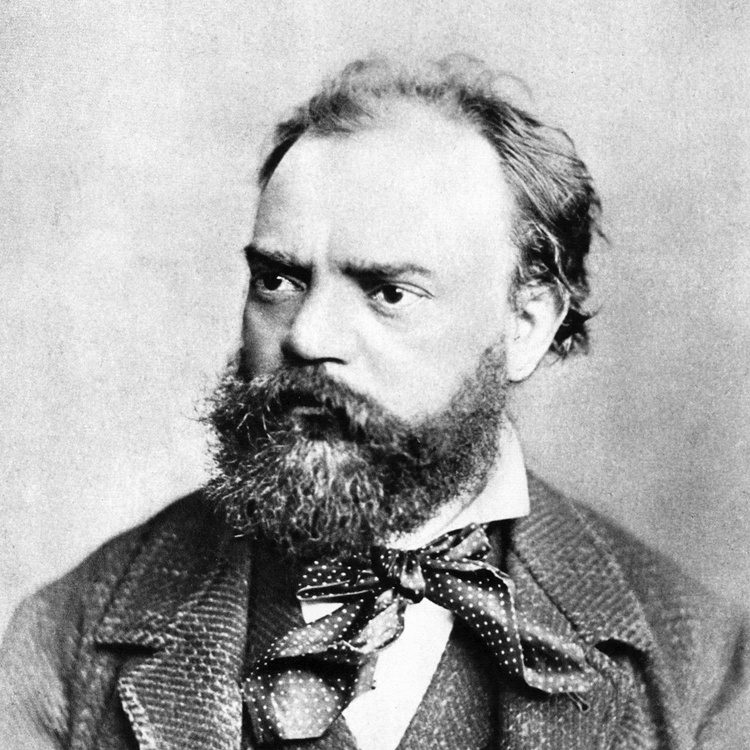
ANTONIN DVOŘÁK
Music
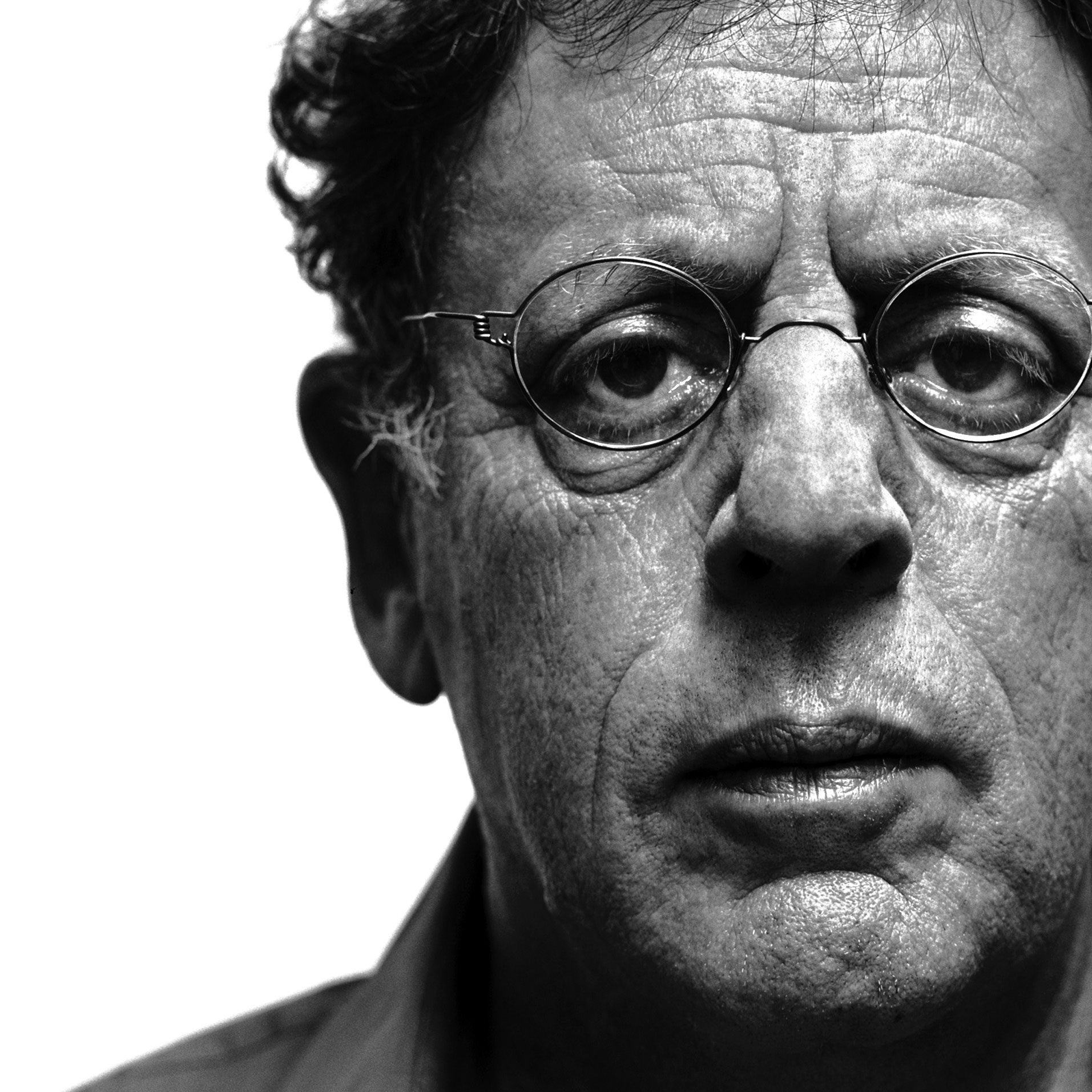
PHILIP GLASS
Music

AUSTIN SYMPHONY ORCHESTRA
Live Accompaniment

AUSTIN CHAMBER MUSIC CENTER
Live Accompaniment
Known for his innovative and collaborative choreographic projects, Stephen Mills has works in the repertoires of dance companies across the United States and around the world.
His international career began in 1998 after being chosen Prix d’Auteur at les Rencontres Chorégraphiques Internationales de Seine-Saint-Denis in Paris. In his inaugural season as Artistic Director of Ballet Austin in 2000, Mills attracted national attention with Hamlet, hailed by Dance Magazine as “…sleek and sophisticated.”
Mills’ works showcased at The Kennedy Center include A Midsummer Night’s Dream, The Taming of the Shrew, and performances at the Ballet Across America Festival in collaboration with The Suzanne Farrell Ballet.
In 2005 Mills developed a community-wide human rights collaborative dialogue culminating in his signature work Light/The Holocaust & Humanity Project for which he received the Audrey and Raymond Maislin Humanitarian Award from The Anti-Defamation League. Mills contributed a podcast about Light to the Voices on Anti-Semitism series at The United States Holocaust Memorial Museum and was invited to speak about the work at The United Nations in 2014. Light has been performed in five U.S. cities, in three cities in Israel, and was recently featured in an Emmy Award-winning PBS documentary, Sharing Light.
George Balanchine, who is regarded as the foremost contemporary choreographer in the world of ballet, came to the United States in late 1933 following an early career throughout Europe.
His trip to the United States in 1933 was at the invitation of Lincoln Kirstein, the Boston born dance connoisseur whose dream it was to establish an American school of ballet equivalent to the European schools, as well as an American ballet company. Kirstein had met Balanchine in Paris after seeing a performance by the company that Balanchine was then directing there, Les Ballets 1933; the two were introduced by Romola Nijinsky, widow of the famous Russian dancer, whom Kirstein assisted in her research for a biography of her late husband.
The first result of the Balanchine Kirstein collaboration was The School of American Ballet, founded in early 1934 (the first day of class, in fact, was January 1 of that year) and existing to the present day. It later became the training ground for dancers going into New York City Ballet, which Balanchine and Kirstein were to establish together after 14 more years, in 1948. Balanchine’s first ballet in this country was Serenade, choreographed in 1934 to music by Tchaikovsky, which was premiered outdoors on the estate of a friend near White Plains, New York, as a workshop performance.
In 1935, Kirstein and Balanchine set up a touring company of dancers from the school and called it the American Ballet. That same year the Metropolitan Opera invited the company to become its resident ballet, with Balanchine as the Met’s ballet master. Tight funding, however, permitted Balanchine to mount only two completely dance-oriented works while with the Met, a dance drama version of Gluck’s Orfeo and Eurydice and an all-Stravinsky program, featuring a revival of one of Balanchine’s first ballets, Apollo, plus two new works, Le Baiser de la Fée, and Card Game.
Despite the popular and critical success of the latter program, Balanchine and the Met parted company in early 1938, and Balanchine spent his next few years teaching at the School and working in musical theatre and films. In 1941, he and Kirstein assembled the American Ballet Caravan, sponsored by Nelson Rockefeller, which toured South America with such new Balanchine creations as Concerto Barocco and Ballet Imperial (later renamed Tchaikovsky Piano Concerto No. 2). Then from 1944 to 1946, Balanchine was called in as artistic director to help revitalize the Ballet Russe de Monte Carlo; he created Raymonda and La Sonnambula for them.
In 1946 Balanchine and Kirstein collaborated again to form Ballet Society, a company which introduced New York subscription only audiences over the next two years to such new Balanchine works as The Four Temperaments (1946) and Stravinsky’s Renard (1947) and Orpheus (1948).
On October 11, 1948, Morton Baum, chairman of the City Center finance committee, saw Ballet Society in a City Center Theater program that included Orpheus, Serenade, and Symphony in C (a ballet which Balanchine had created for the Paris Opera Ballet under the title Le Palais de Crystal the previous year). Baum was so highly impressed that he initiated negotiations that led to the company’s being invited to join the City Center municipal complex (which at that time the New York City Drama Company and the New York City Opera were a part of) as the “New York City Ballet.” Balanchine’s talents at last had found a permanent home.
Since that time, Balanchine served as artistic director for New York City Ballet, choreographing (either wholly or in part) the majority of the now 175 productions the company has introduced since its inception. Among the most noteworthy were The Firebird (1949; restaged with Jerome Robbins, 1970); Bourrée Fantasque (1949); La Valse (1951); The Nutcracker (his first full length work for the company), Ivesiana and Western Symphony (1954); Allegro Brillante (1956); Agon (1957); Seven Deadly Sins (a revival of the original Les Ballets 1933 production) and Stars and Stripes(1958); Episodes (1959); Monumentum Pro Gesualdo and Liebeslieder Walzer (1960); A Midsummer Night’s Dream (1962); Movements for Piano and Orchestra and Bugaku (1963); Don Quixote (in three acts) and Harlequinade (in two acts) (1965); Jewels (1967) (his first full length plotless ballet) and Who Cares? (1970). In June 1972, he choreographed Stravinsky Violin Concerto, Duo Concertant, Choral Variations on Bach’s Von Himmel Hoch, Scherzo à la Russe, Symphony in Three Movements, Divertimento from Le Baiser de la Fée, and new versions of Pulcinella (with Robbins) and Danses Concertantes for the New York City Ballet Stravinsky Festival.
The son of a composer, Balanchine early in life gained a knowledge of music that far exceeded that of most of his fellow choreographers. He began studying the piano at the age of five and following his graduation in 1921, from the Imperial Ballet School (the St. Petersburg academy where he had started his dance studies at the age of nine), he enrolled in the state’s Conservatory of Music, where he studied piano and musical theory, including composition, harmony and counterpoint, for three years. Such extensive musical training made it possible for Balanchine as a choreographer to communicate with a composer of such stature as Igor Stravinsky; the training also gave Balanchine the ability to reduce orchestral scores on the piano, an invaluable aid in translating music into dance.
Balanchine made his own dancing debut at the age of ten as a Cupid in the Maryinsky Theatre Ballet Company’s production of The Sleeping Beauty. He joined the company as a member of the corps de ballet at 17 and staged one work for them, called Enigmas. Most of his energies during this period, however, were concentrated on choreographic experiments outside the company.
In the summer of 1924, Balanchine was one of the four dancers who left the newly formed Soviet Union for a tour of Western Europe. The others were Tamara Geva, Alexandra Danilova, and Nicholas Efimov, all of whom later became well known dancers in Europe and the United States. All four dancers were invited by impresario Serge Diaghilev to audition for his Ballets Russes in Paris and were accepted into the company.
Diaghilev also had his eye on Balanchine as a choreographer as well, and after watching him stage a new version of the company’s Stravinsky ballet, Le Rossignol, Diaghilev hired him as ballet master to replace Bronislava Nijinska. Shortly after this, Balanchine suffered a knee injury which limited his dancing and correspondingly bolstered his commitment to full time choreography.
Balanchine served as ballet master with Ballets Russes until the company was dissolved following the death of Diaghilev in 1929. After that, he spent the next few years on a variety of projects which took him all over Europe: choreographing for the Royal Danish Ballet; making a movie with former Diaghilev ballerina Lydia Lopoukhova (then the wife of British economist John Maynard Keynes) in England; staging dance extravaganzas for Britain’s popular Cochran Musical Theatre Revues; and working with DeBasil’s Ballet Russe de Monte Carlo (where he discovered the young Tamara Toumanova).
Returning to Paris, Balanchine formed his own company, Les Ballets 1933, collaborating with such leading artistic figures as Bertolt Brecht and Kurt Weill (Seven Deadly Sins), the artist Pavel Tchelitchev, and composers Darius Milhaud and Henri Sauguet. It was during this period that the meeting with Lincoln Kirstein occured, which was to lead to Balanchine’s move from Europe to the United States.
Balanchine has choreographed numerous musical comedies over the years, including On Your Toes (of which Slaughter on Tenth Avenue, a work in New York City Ballet’s repertory, was a part), Cabin in the Sky, Babes in Arms, Where’s Charley?, Song of Norway, The Merry Widow, and The Ziegfield Follies of 1935. His film credits include Star Spangled Rhythm, I Was An Adventuress, and Goldwyn Follies. He choreographed the operasThe Rake’s Progress and The Magic Flute for the Met and he collaborated with Stravinsky on the television ballet, Noah and the Flood, in 1962.
Balanchine’s style has been described as neoclassic, a reaction to the Romantic anticlassicism (which had turned into exaggerated theatricality) that was the prevailing style in Russian and European ballet when he had begun to dance. As a choreographer, Balanchine has generally tended to de-emphasize plot in his ballets, preferring to let “dance be the star of the show,” as he once told an interviewer.
He always preferred to call himself a craftsman rather than a creator, comparing himself to a cook or a cabinetmaker (two crafts in which he was rather skilled). He was known throughout the dance world for the calm and collected way in which he works with his dancers and colleagues.
Balanchine himself has written: “We must first realize that dancing is an absolutely independent art, not merely a secondary accompanying one. I believe that it is one of the great arts. The important thing in ballet is the movement itself, as it is sound which is important in a symphony. A ballet may contain a story, but the visual spectacle, not the story, is the essential element. The music of great musicians, it can be enjoyed and understood without any verbal introduction and the choreographer and the dancer must remember that they reach the audience through the eye and the audience, in its turn, must train itself to see what is performed upon the stage. It is the illusion created which convinces the audience, much as it is with the work of a magician. If the illusion fails, the ballet fails, no matter how well a program note tells the audience that it has succeeded.”
Balanchine’s long time friend and collaborator, Igor Stravinsky, once described their association on one particular ballet as follows: “Balustrade, the ballet that George Balanchine and Pavel Tchelitchev made of the Violin Concerto, was one of the most satisfactory visualizations of any of my works. Balanchine composed the choreography as he listened to my recording, and I could actually observe him conceiving gesture, movement, combination, and composition. The result was a series of dialogues perfectly complimentary to and coordinated with the dialogues of the music. Hofmannsthal once said to Strauss: ‘Ballet is perhaps the only form of art which permits real intimate collaboration between two people gifted with visual imagination.’”
Architect of, and principal choreographer for, the New York City Ballet’s Homage àagrave; Ravel festival, Balanchine brought to life a three week celebration of 16 new ballets of which eight were his own creations. At a ceremony held on the evening of the Company’s Ravel Festival Gala at the New York State Theater in May 1975, the French Government proclaimed him a member of the Legion of Honor. In an extraordinary gesture of esteem, Balanchine was awarded the rank of Officer, a position usually reserved for those with many years of prior membership in the Legion.
Also in the spring of 1975, the Entertainment Hall of Fame in Hollywood inducted Balanchine as a member in a nationally televised special, hosted by Gene Kelly. The first choreographer so honored, he joins the ranks of such show business luminaries as Fred Astaire, Walt Disney and Bob Hope. Additionally, in May 1975, the National Institute of Arts and Letters presented him with a rarely given award for Distinguished Service to the Arts, an honor of special significance from the 250 leading American artists who comprise the Institute.
In the last few years, Balanchine has produced two spectacular choreographic achievements. The first was the hour long Bicentennial tributeUnion Jack which premiered in May 1976. In the Spring of 1977 came perhaps the most lavish production in the New York City Ballet’s repertory, Vienna Waltzes, which was greeted with resounding critical and popular acclaim. Through the wonders of television, millions of people have been able to see New York City Ballet in their own homes. Choreography by Balanchine, a four part Dance in America presentation on the PBS series Great Performances, began in December 1977. Included on the programs have been The Four Temperaments, Tzigane, Prodigal Son, Allegro Brillante, segments of Jewels and Ballo della Regina, one of his more recent works. Balanchine travelled to Nashville with the company for the video tapings in 1977 and 1978 and personally supervised every shot, in some cases revising steps or angles to be compatible with the camera. The series has been broadly applauded by critics and audiences over the country and was nominated for an Emmy.
In January 1978, New York City Ballet participated in the acclaimed PBS series Live from Lincoln Center for the first time. Coppélia, choreographed by George Balanchine and Alexandra Danilova in 1974, was seen live from the stage of the New York State Theater at Lincoln Center. This presentation also netted Balanchine an Emmy nomination.
Although New York City Ballet has entered its fourth decade, the energy and achievements of George Balanchine continue unabated. Two of his most popular recent works, Ballo della Regina and Kammermusik No. 2 were premiered in 1978, and in December 1978, Balanchine, along with Marian Anderson, Fred Astaire, Richard Rodgers, and Arthur Rubinstein, was one of the five recipients of the First Kennedy Center Honors. The Awards, which were presented by President Carter in an official ceremony at the White House, were followed by a nationally televised program honoring the recipients and their achievements. The citation read in part: “Each has raised the artistic standards to which successors must aspire, but more importantly, each, by talent and dedication, has raised our hearts.”
The 1980’s promised even more in terms of both creativity and recognition. Balanchine introduced four new works to New York City Ballet audiences in the spring of 1980: Ballade, to music by Gabriel Fauré; Walpurgisnacht Ballet from Charles Gounod’s opera Faust (this ballet was created for the Paris Opera in 1975, but was restaged for the New York City Ballet); Richard Strauss’ Le Bourgeois Gentilhomme, (Balanchine created this comic ballet for the New York City Opera in April, 1979, and it was first performed by the New York City Ballet in May 1980), and finally, in June 1980, Robert Schumann’s Davidsbundlertanze.
Also, in the spring of 1980, Balanchine was honored by the National Society of Arts and Letters with their Gold Medal of Merit, and by the New York Chapter of the American Heart Association with their Heart of New York Award. He was also informed that the Austrian Government would be awarding him the Austrian Cross of Honor for Science and Letters, First Class. This Award joined his French Legion of Honor, his French Commander of the Order of Arts and Letters decoration, and his 1978 Knighthood of the Order of Dannebrog, First Class, given by Queen Margrethe II of Denmark, on the list of stellar honors given by foreign Governments for his services and contributions to the artistic development of the 20th century.
Source: New York City Ballet
Jessica Lang is an American director and choreographer based in New York City.
Since 1999, Lang has created more than 100 original works on companies worldwide including American Ballet Theatre, Alvin Ailey American Dance Theater, Pacific Northwest Ballet, Birmingham Royal Ballet, the National Ballet of Japan, The Joffrey Ballet, and her eponymous company Jessica Lang Dance, among many others.
For more than two decades, Lang has worked extensively for American Ballet Theatre. Her original creations on the main company include Her Notes, Garden Blue,and ZigZag with the legendary Tony Bennett, as well as Let Me Sing Forevermorewhich was performed on the ABT Across America nationwide tour and featured regularly on Celebrity Cruise entertainment programs. Lang has created seven ballets on ABT Studio Company including Children’s Songs Dance in collaboration with music icon Chick Corea. Additionally for ABT, Lang was part of the founding faculty of the Jacqueline Kennedy Onassis School, a teaching artist for the summer intensives and the Make-a-Ballet program, and served as a mentor and panelist for the Incubator program.
For opera, Lang directed and choreographed Pergolesi’s Stabat Mater at the 2013 Glimmerglass Opera Festival that was presented at Lincoln Center’s White Light Festival in 2017 performed by Jessica Lang Dance. In 2016, she choreographed San Francisco Opera’s production of Aida, directed by Francesca Zambello that was presented at Washington National Opera, Seattle Opera and, in 2022, LA Opera. Additional commissions include new works for the Kennedy Center with the National Symphony Orchestra, The Harris Theater and the Chicago Architecture Biennial in collaboration with architect Steven Holl, the Dallas Museum of Art and the Guggenheim Museum for its Works and Process series. For fashion, Lang was the movement advisor for Carolina Herrera’s Pre-Fall 2022 collection.
Lang was Artistic Director of Jessica Lang Dance from 2011-2019. Founded in 2011, the company toured and performed in over 85 cities presented by major venues including Lincoln Center for the Performing Arts, Los Angeles Music Center, The Kennedy Center, The Harris Theater, New York City Center, Northrop Auditorium, Winspear Opera House, Tel Aviv Opera House, Jacob’s Pillow Dance Festival, BAM Fisher and Helikon Opera, among many others.
She is the recipient of a 2018 Martha Hill Mid-Career Award, the 2017 Arison Award and a 2014 Bessie Award. She has been a fellow of New York City Center and NYU’s Center for Ballet and the Arts, and in 2019 named a Caroline Hearst Choreographer-in-Residence at Princeton University. Lang’s work has also been performed by numerous educational institutions including The Juilliard School, SUNY Purchase, NYU Tisch School of the Arts and University of Arizona, among many others.
Jessica Lang is originally from Bucks County, PA and a graduate of The Juilliard School under the direction of Benjamin Harkarvy. Lang is a former member of Twyla Tharp’s company, THARP! where she toured and performed all over the world.
Source: Jessicalangchoreographer.com
Pyotr Ilyich Tchaikovsky
(1840–1893)
Pyotr Ilyich Tchaikovsky is widely considered the most popular Russian composer in history. His work includes the ‘The Sleeping Beauty’ and ‘The Nutcracker.’
Who Was Tchaikovsky?
Composer Pyotr Ilyich Tchaikovsky’s work was first publicly performed in 1865. In 1868, his First Symphony was well-received. In 1874, he established himself with Piano Concerto No.1 in B-flat Minor. Tchaikovsky resigned from the Moscow Conservatory in 1878 and spent the rest of his career composing yet more prolifically. Tchaikovsky is most celebrated for his ballets, specifically Swan Lake, The Sleeping Beauty and The Nutcracker. He died in St. Petersburg on November 6, 1893.
Early Life
Russian composer Pyotr Ilyich Tchaikovsky was born on May 7, 1840, in Kamsko-Votkinsk, Vyatka, Russia. He was the second eldest of his parents’ six surviving offspring. Tchaikovsky’s father, Ilya, worked as a mine inspector and metal works manager.
When he was just five years old, Tchaikovsky began taking piano lessons. Although he displayed an early passion for music, his parents hoped that he would grow up to work in the civil service. At the age of 10, Tchaikovsky began attending the Imperial School of Jurisprudence, a boarding school in St. Petersburg. His mother, Alexandra, died of cholera in 1854, when he was 14 years old. In 1859, Tchaikovsky honored his parents’ wishes by taking up a bureau clerk post with the Ministry of Justice — a post he would hold for four years, during which time he became increasingly fascinated with music.
When he was 21, Tchaikovsky decided to take music lessons at the Russian Musical Society. A few months later, he enrolled at the newly founded St. Petersburg Conservatory, becoming one of the school’s first composition students. In addition to learning while at the conservatory, Tchaikovsky gave private lessons to other students. In 1863, he moved to Moscow, where he became a professor of harmony at the Moscow Conservatory.
Tchaikovsky’s Compositions
Operas
Pyotr Tchaikovsky’s work was first publicly performed in 1865, with Johann Strauss the Younger conducting Tchaikovsky’s Characteristic Dances at a Pavlovsk concert. In 1868, Tchaikovsky’s First Symphony was well-received when it was publicly performed in Moscow. The following year, his first opera, The Voyevoda, made its way to the stage — with little fanfare.
After scrapping The Voyevoda, Tchaikovsky repurposed some of its material to compose his next opera, Oprichnik, which achieved some acclaim when it was performed at the Maryinsky in St. Petersburg in 1874. By this time, Tchaikovsky had also earned praise for his Second Symphony. Also in 1874, his opera, Vakula the Smith, received harsh critical reviews, yet Tchaikovsky still managed to establish himself as a talented composer of instrumental pieces with his Piano Concerto No.1 in B-flat Minor.
From ‘Swan Lake’ to ‘The Nutcracker’ Ballets
Acclaim came readily for Tchaikovsky in 1875, with his composition Symphony No. 3 in D Major. At the end of that year, the composer embarked on a tour of Europe. In 1876, he completed the ballet Swan Lake as well as the fantasy Francesca da Rimini. While the former has come to be one of the most frequently performed ballets of all time, Tchaikovsky again endured the ire of critics, who at its premiere panned it as too complex and too “noisy.”
Tchaikovsky resigned from the Moscow Conservatory in 1878 to focus his efforts entirely on composing. As a result, he spent the remainder of his career composing more prolifically than ever. His collective body of work constitutes 169 pieces, including symphonies, operas, ballets, concertos, cantatas and songs. Among his most famed late works are the ballets The Sleeping Beauty (1890) and The Nutcracker (1892).
Personal Life
Struggling with societal pressures to repress his homosexuality, in 1877, Tchaikovsky married a young music student named Antonina Milyukova. The marriage was a catastrophe, with Tchaikovsky abandoning his wife within weeks of the wedding. During a nervous breakdown, he unsuccessfully attempted to commit suicide, and eventually fled abroad.
Tchaikovsky could afford to resign from the Moscow Conservatory in 1878, thanks to the patronage of a wealthy widow named Nadezhda von Meck. She provided him with a monthly allowance until 1890; oddly, their arrangement stipulated that they would never meet.
Death
Tchaikovsky died in St. Petersburg on November 6, 1893. While the cause of his death was officially declared as cholera, some of his biographers believe that he committed suicide after the humiliation of a sex scandal trial. However, only oral (no written) documentation exists to support this theory.
Biography courtesy of biography.com.
Antonín Dvořák, in full Antonín Leopold Dvořák, (born September 8, 1841, Nelahozeves, Bohemia, Austrian Empire [now in Czech Republic]—died May 1, 1904, Prague), first Bohemian composer to achieve worldwide recognition, noted for turning folk material into 19th-century Romantic music.
Life
Dvořák was born, the first of nine children, in Nelahozeves, a Bohemian (now Czech) village on the Vltava River north of Prague. He came to know music early, in and about his father’s inn, and became an accomplished violinist as a youngster, contributing to the amateur music-making that accompanied the dances of the local couples. Though it was assumed that he would become a butcher and innkeeper like his father (who also played the zither), the boy had an unmistakable talent for music that was recognized and encouraged. When he was about 12 years old, he moved to Zlonice to live with an aunt and uncle and began studying harmony, piano, and organ. He wrote his earliest works, polkas, during the three years he spent in Zlonice. In 1857 a perceptive music teacher, understanding that young Antonín had gone beyond his own modest abilities to teach him, persuaded his father to enroll him at the Institute for Church Music in Prague. There Dvořák completed a two-year course and played the viola in various inns and with theatre bands, augmenting his small salary with a few private pupils.
The 1860s were trying years for Dvořák, who was hard-pressed for both time and the means, even paper and a piano, to compose. In later years he said he had little recollection of what he wrote in those days, but about 1864 two symphonies, an opera, chamber music, and numerous songs lay unheard in his desk. The varied works of this period show that his earlier leanings toward the music of Ludwig van Beethoven and Franz Schubert were becoming increasingly tinged with the influence of Richard Wagner and Franz Liszt.
Among the students Dvořák tutored throughout the 1860s were the sisters Josefina and Anna Čermáková. The musician fell in love with the elder sister, Josefina, but she did not reciprocate his feelings. The anguish of his unrequited love is said to be expressed in Cypresses (1865), a number of songs set to texts by Gustav Pfleger-Moravský. In November 1873 he married the younger sister, Anna, a pianist and singer. The first few years of the Dvořáks’ marriage were challenged by financial insecurity and marked by tragedy. Anna had given birth to three children by 1876 but by 1877 had buried all of them. In 1878, however, she gave birth to the first of the six healthy children the couple would raise together. The Dvořáks maintained a close relationship with Josefina and the man she eventually married, Count Václav Kounic. After several years of regular visits, they bought a summer house in the small village of Vysoká, where Josefina and the count had settled, and spent every summer there from that point onward. Dvořák composed some of his best-known works there.
In 1875 Dvořák was awarded a state grant by the Austrian government, and this award brought him into contact with Johannes Brahms, with whom he formed a close and fruitful friendship. Brahms not only gave him valuable technical advice but also found him an influential publisher in Fritz Simrock, and it was with his firm’s publication of the Moravian Duets (composed 1876) for soprano and contralto and the Slavonic Dances (1878) for piano duet that Dvořák first attracted worldwide attention to himself and to his country’s music. The admiration of the leading critics, instrumentalists, and conductors of the day continued to spread his fame abroad, which led naturally to even greater triumphs in his own country. In 1884 he made the first of 10 visits to England, where the success of his works, especially his choral works, was a source of constant pride to him, although only the Stabat Mater(1877) and Te Deum (1892) continue to hold a position among the finer works of their kind. In 1890 he enjoyed a personal triumph in Moscow, where two concerts were arranged for him by his friend Pyotr Ilyich Tchaikovsky. The following year he was made an honorary doctor of music of the University of Cambridge.
Dvořák accepted the post of director of the newly established National Conservatory of Music in New York in 1892, and, during his years in the United States, he traveled as far west as Iowa. Though he found much to interest and stimulate him in the New World environment, he soon came to miss his own country, and he returned to Bohemia in 1895. The final years of his life saw the composition of several string quartets and symphonic poems and his last three operas.
Works of Antonín Dvořák
Bedřich Smetana, Dvořák’s senior by 17 years, had already laid the foundations of the Czech nationalist movement in music, but it was left to Dvořák to develop and extend this in an impressive series of works that quickly came to rank in popularity with those of his great German contemporaries. The reasons for Dvořák’s popularity lie in his great talent for melody and in the delightfully fresh Czech character of his music, which offered a welcome contrast to the heavier fare of some of his contemporaries.
Dvořák’s technical fluency and abundant melodic inspiration helped him to create a large and varied output. He composed in all the musical genres and left works that are regarded as classics in all of them, with the possible exception of opera. All Dvořák’s mature symphonies are of high quality, though only the sombre Symphony No. 7 in D Minor (1885) is as satisfactory in its symphonic structure as it is musically. (It should be explained that Dvořák’s mature symphonies were long known as No. 1 to 5, even though he had written four earlier [and unnumbered] ones. All nine of his symphonies have since been renumbered from the traditional order to their actual order of composition.) Dvořák’s Symphony No. 9 in E Minor (From the New World; 1893) remains his best-known work, partly, no doubt, because it was thought to be based on African American spirituals and other influences gained during his years in the United States. Although this may be true to some extent, the music is also characteristically Bohemian in its themes. However, the Symphony No. 9 is in no way superior to the Symphony No. 6 in D Major (1880) or the Symphony No. 8 in G Major (1889) and is actually less characteristic of the composer than these other works. Of the four concerti Dvořák wrote, only the Cello Concerto in B Minor (1895) can safely be called a classic.
In spite of the fact that his work in the medium is sometimes overstrained, Dvořák’s chamber music is also of high quality. The Piano Quintet in A Major (1887) is one of the glories of chamber music, and the string quartets, Opuses 51 (1879), 105 (1895), and 106 (1895), the String Sextet, Opus 48 (1878), and the Dumky Trio, Opus 90 (1891), also rank high. The choral works, so popular when they first appeared, have suffered the fate of most late 19th-century choral music, yet the Stabat Mater (1877) and Te Deum (1892) are among the better examples of their kind. Opera remained the one medium that proved recalcitrantto Dvořák’s genius, though he wrote 10 of them, notably Rusalka (1900). Many of Dvořák’s most attractive works are among his miscellaneous, less-ambitious ones—the Slavonic Dances (1878, 1886) and other piano duets, the Symphonic Variations (1877), the Bagatelles (1878), the Gypsy Songs (1880), and the Scherzo Capriccioso (1883).
Some critics have considered Dvořák’s chief faults to be an overly discursive and repetitive manner, occasional lapses in taste, and a weakness of design in his larger works. Such shortcomings, however, amount to little in the light of the astonishing fertility of his melody and the simplicity and directness with which he achieves his ends. As might be gathered from his music, Dvořák had an attractive personality. He was a humble and deeply religious family man of simple tastes and a great lover of nature.
Synopsis
Musician Philip Glass, born on January 31, 1937, in Baltimore, went on to study with Nadia Boulanger and Ravi Shankar, later forming the Philip Glass Ensemble. He received accolades for his debut opera, Einstein on the Beach, and eventually earned Oscar nominations for scoring the films Kundun, The Hours and Notes on a Scandal. Known for his distinctive contemporary minimalism, Glass has worked with artists from a variety of disciplines.
Background and Education
Philip Glass was born on January 31, 1937, in Baltimore. He took up the violin and flute and began performing before reaching his teens. Glass took classes at the Peabody Institute’s conservatory and later studied at the University of Chicago and The Juilliard School.
Studies With Ravi Shankar
Glass eventually decided to travel to Europe, studying under conductor Nadia Boulanger and sitar musician Ravi Shankar, whom Glass cited as a major influence on his craft.
Glass adopted an approach to musical composition that relied on repetitive, sometimes subtly nuanced musical structures that would be seen as a cornerstone of contemporary minimalism. (The composer later saw the term “minimalism” as an outdated way of describing his work and the varying sounds of up-and-coming artists.) He formed the electric Philip Glass Ensemble in 1967, an avant-garde group that would continue to earn buzz over the years, if not universal acclaim.
Biography courtesy of biography.com
About the Austin Symphony Orchestra
The mission of the Austin Symphony Orchestra Society, Inc. is to enhance the cultural quality of life for the adults and young people of Austin and Central Texas by providing excellence in music performance and educational programming.”
Founded in 1911, the Austin Symphony Orchestra is Austin’s oldest performing arts group. The ASO offers a complete season of musical and educational programming. Masterworks concerts include a series of eight concert pairs running monthly September through May in the state-of-the-art Joe R. & Teresa Lozano Long Center for the Performing Arts. Our season also features the Sarah & Ernest Butler Pops Series: October & February Pops at the Long Center and December & June Pops at Palmer Events Center. Programming for the entire family includes the Halloween Children’s Concert, and the Christmas in the Community, as well as the popular James C. Armstrong Youth Educations Programs, which include Children’s Day Art Park, Young People’s Concerts, High School Concert Tour and a variety of other school programs.
Symphony Square at 11th and Red River is home to the ASO’s administrative offices. This complex of four historic Austin buildings (two of which are owned by the ASO and Waterloo Greenway) is also home to the Women’s Symphony League of Austin.
Please Note: As of January, 2021 our new temporary administration office is located at 1806 Rio Grande St., Austin, TX 78701.
Music Director, Maestro Peter Bay: https://austinsymphony.org/about/conductor/
Austin Symphony Orchestra Musicians: https://austinsymphony.org/about/musicians/
Artistic Director, Dr. Michelle Schumann: https://austinchambermusic.org/people/michelle-schumann/
About the Austin Chamber Music Center
Founded in 1981, The Austin Chamber Music Center has distinguished itself as one of the premier chamber music organizations in the world. Through education, outreach, and performances (including a full season of concerts and an annual summer chamber music festival), ACMC continually serves the Austin community with the highest quality artistry and instruction. In 2015 ACMC was awarded the CMAcclaim award from Chamber Music America for is tremendous impact on the local community through chamber music. ACMC performs a wide variety of classical and innovative genres.
Mariama Alcantera, violin
Douglas Harvey, cello
Dr. Michelle Schumann, piano
THANK YOU TO OUR SPONSORS
INDIVIDUAL PRODUCTION SPONSORS
NIKKI BRYANT IRION & TERRY IRION
DR. JOAQUIN DELGADO
ANN & JAMES DOWNING
RENÉE GALLAGHER & JASON PENNINGTON
DR. JENNIFER MILLSPAUGH & SIDNEY MILLSPAUGH III
LINDA BALL & FORREST PREECE
LIANA & ARJUN RAO
CAROLYN & MARC SERIFF
Endowed in part by the Curatorial Fund through the Ballet Austin Foundation including the generosity of
Janette & Patrick Keating
Barbara & Alan Cox – In memory of James Alan Cox
In memory of Martha B. Harrington
GOVERNMENT FUNDING SPONSORS
